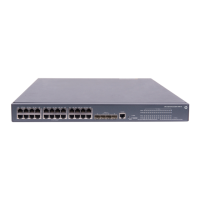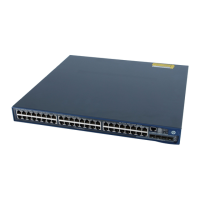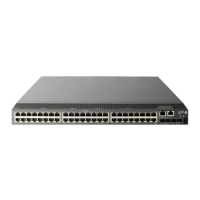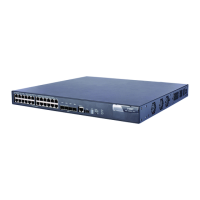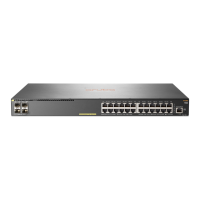24
To do... Use the command... Remarks
Enter Ethernet interface view,
Layer 2 aggregate interface view,
or port group view
interface interface-type interface-
number
Required
Use either approach
port-group manual port-group-
name
Configure the port as a static
member port
igmp-snooping static-group
group-address [ source-ip source-
address ] vlan vlan-id
Required
No static member ports exist by
default
Configure the port as a static
router port
igmp-snooping static-router-port
vlan vlan-id
Required
No static router ports exist by
default
NOTE:
A static (S, G) entry for a port takes effect only if a valid multicast source address is specified and
IGMPv3 snooping runs.
A static member port does not respond to queries from the IGMP querier. When a static (*, G) or (S,
G) entry is configured or removed for a port, the port does not send an unsolicited IGMP report or an
IGMP leave message.
Static member ports and static router ports never age out. To remove such a port, use the
corresponding undo command.
Configuring simulated joining
Generally, a host that runs IGMP can respond to IGMP queries that the IGMP querier sends. If a host
fails to respond, the multicast router might deem that no member of this multicast group exists on the
network segment, and removes the corresponding forwarding path.
To avoid this situation, you can enable simulated joining on a port of the switch. That is, you configure
the port as a simulated member host for a multicast group. When the simulated member host receives an
IGMP query, it gives a response. Therefore, the switch can continue receiving multicast data.
A simulated host acts like a real host in the following ways:
• When a port is configured as a simulated member host, the switch sends an unsolicited IGMP
report through the port, and can respond to IGMP general queries with IGMP reports through the
port.
• When the simulated joining function is disabled on a port, the switch sends an IGMP leave
message through the port.
Follow these steps to configure simulated joining:
To do... Use the command... Remarks
Enter system view
system-view —
Enter Ethernet interface view,
Layer 2 aggregate interface view,
or port group view
interface interface-type interface-number
Required
Use either approach
port-group manual port-group-name
Configure simulated joining
igmp-snooping host-join group-address [
source-ip source-address ] vlan vlan-id
Required
Not configured by default
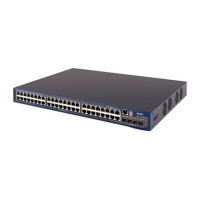
